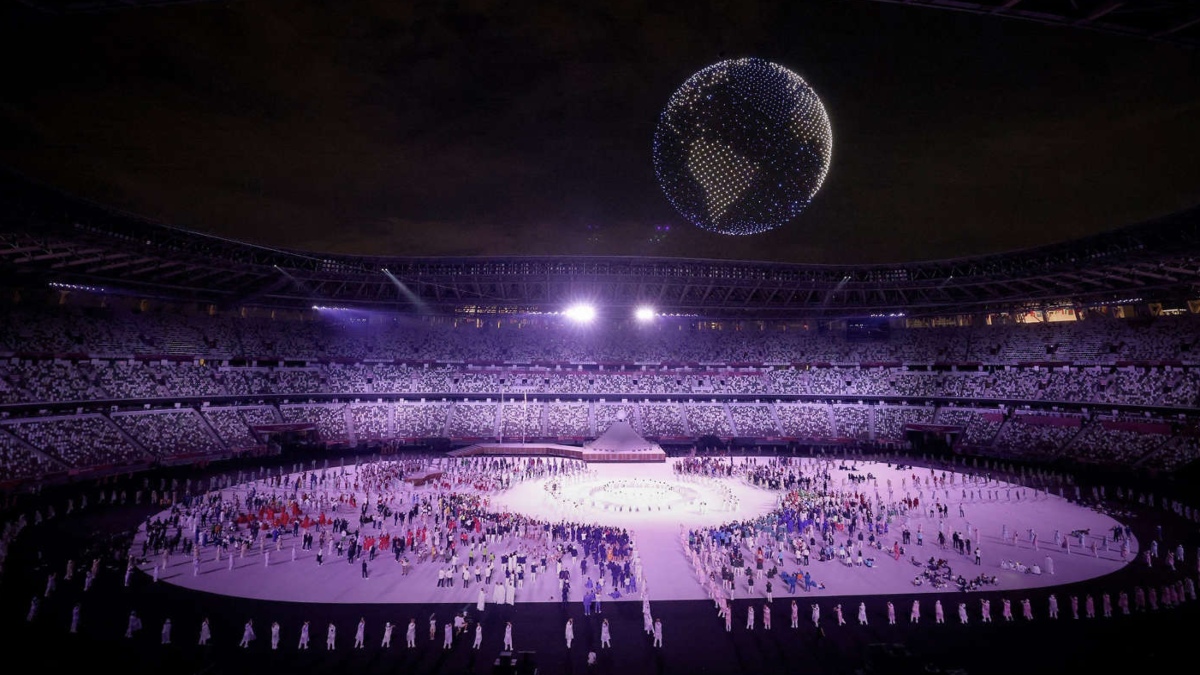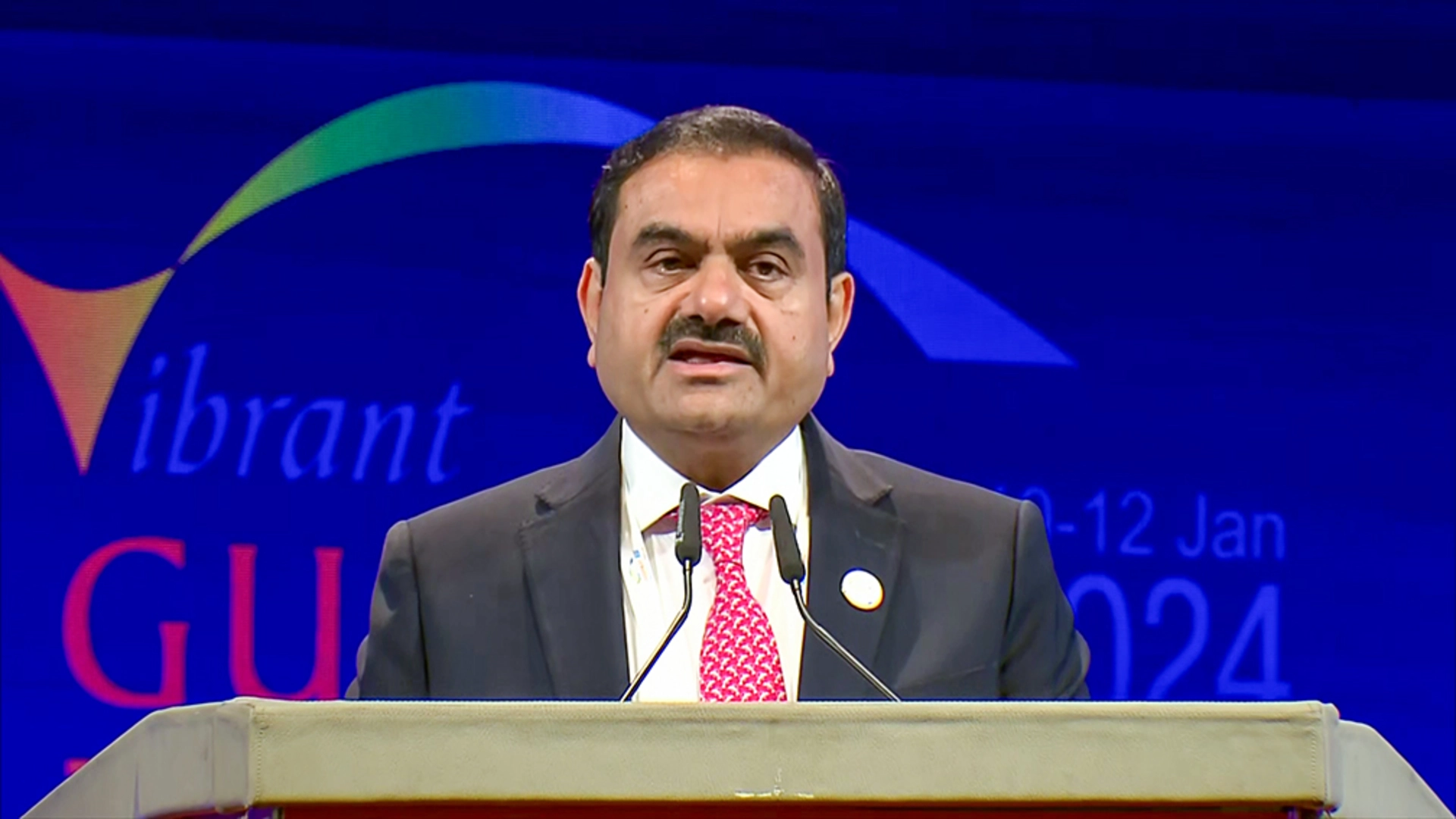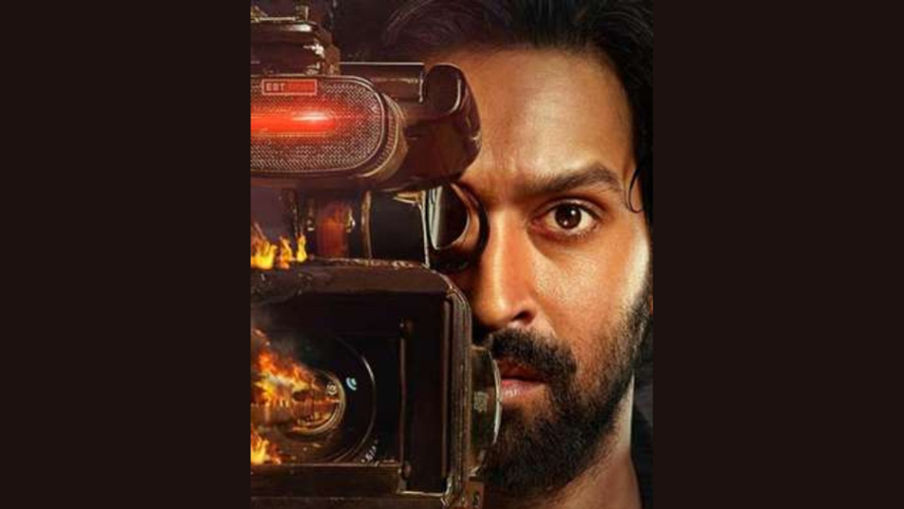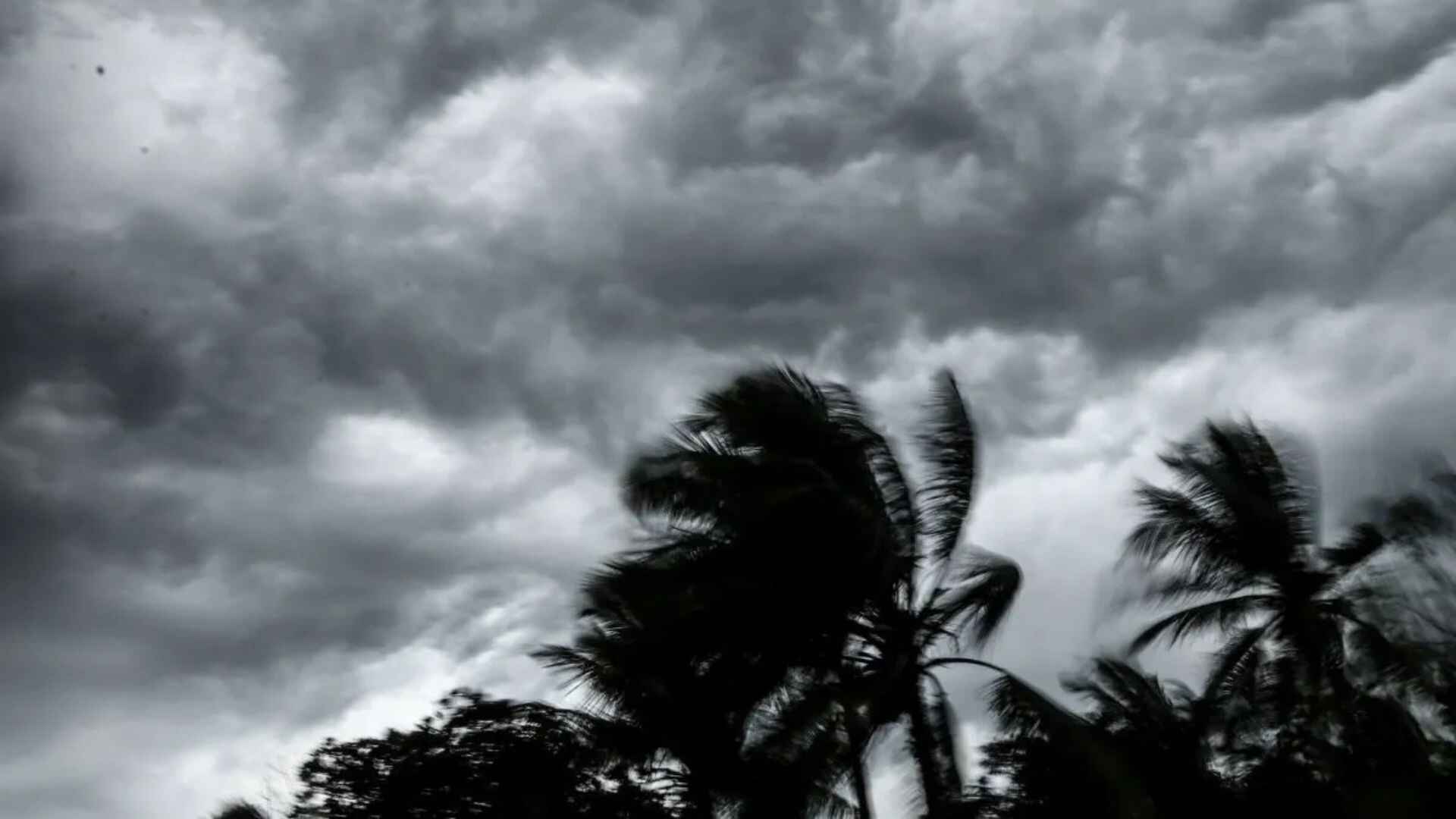
As fireworks lit the sky for the opening of the Tokyo Olympics, something magical happened: A fleet of 1,824 drones in the air formed the official symbol of the Tokyo Games; the display then transformed into the Earth with coloured maps of continents. This heavenly performance was orchestra to the score of Imagine by John Lennon (reworked).
The drones utilised Intel’s “Shooting Stars” platform, and displayed the unprecedented power of the advanced technology with a breath-taking spectacle like none before.
The global commercial drone market size has been valued at $13.44 billion in 2020. Expected to be galloping at a compound annual growth rate (CAGR) of 57.5% from 2021 to 2028, the Covid-19 pandemic has accelerated this growth rate with a considerable increase in the utilisation of drone technology across various scenarios. UNICEF has said that more than eighteen countries have deployed drones for delivery and transportation purposes during the pandemic.
The terrorist organisation ISIS has been using drones for warfare and has posted videos from its successful hits online. The US government has been successfully using Predator drones to take out high value terrorist targets in Pakistan and Afghanistan. Recently the terrorists in Jammu and Kashmir upped their game by attacking an Indian Air Force technical airport with drones on 27 June, increasing instances of use of drones by anti-national elements and terrorists are being noticed causing widespread concerns.
UTILITY
The Drones have umpteen applications, some of which we have not yet envisioned.
Replacing hazardous works such as climbing tall structures, inspecting confined areas and traversing dangerous terrains. They are helping save lives during search and rescue efforts and are optimising energy production and delivery.
1. Enforcement: The drones are an important enforcement tool been used by the police in search and rescue, identification of victims, monitoring, analysis, and management of road traffic, or for monitoring pedestrian behaviour and accident prevention, to deal with illegal immigration, for border surveillance. In some US states, the police use drones for crowd control, in accidents, crime tracing, for the monitoring of crime suspects, and in search and rescue operations.
2.Commercial: As compared to on-ground vehicle deliveries, drone deliveries are more environmentally friendly and companies are drawn towards preparing themselves to offer drone delivery services. Some examples among others are Amazon and Google.
3.Environmental Protection: Another crucial and effective role of Drones are in protection of the environment, enforcement of environmental law and environmental crime prevention. In Africa drones have been used to deal with illegal poaching, which threatens the extinction of mammalian species, while in Italy, the police launched the “DroMEP” project, which involves the use of drones in environmental monitoring. Apart from Forest Monitoring, illegal logging, deforestation, and smoke detection to prevent forest fires, small drones can be used for low-cost data collection for biodiversity, natural disasters, and wildlife monitoring and assessment.
4.Agriculture: Agriculture has been most benefited from the usage of drones for different applications such as: mid-season crop health monitoring, irrigation equipment monitoring, and midfield identification. Data acquisition and analysis and for continuously monitoring fields for learning and developing modern farm management skills by the farmers.
5.Health and public: Low-cost drones with a camera on board have been used for public health purposes by detecting water spots to reveal mosquito breeding areas responsible for malaria.
6.Healthcare Logistics: Drones are facilitating the much needed requirement of modernising the last mile in medical deliveries and bridging gaps in access by providing regardless of location—just in time resupplies of key medical items.
In recent times, drones for healthcare have witnessed a range of landmark moments.
A. In India, Medicine from the Sky, a World Economic Forum initiative in partnership with the Telangana government and Apollo Hospitals, has also helped enable and scale drone-based medical deliveries in the region.
B. University of Maryland drone delivered a kidney that was successfully transplanted into a patient suffering from a serious neurological condition, the first ever drone delivery of a human organ.
C. In Rwanda more than 13,000 deliveries have been done by Zipline drones demonstrating their humanitarian potential.
D. Outside of Kigali, drones now carry 35% of blood supplied for transfusion.
E. In Ghana delivery of Covid-19 testing materials.
Globally, every state is acknowledging the use of drone technology as the need of the hour. India with vast and equally difficult geography and wide-raging healthcare disparities need to incorporate drone delivery solutions on a much larger scale.
TECHNOLOGY
Ranging from Boeing’s Phantom Eye with a 150-ft wingspan that cruises at 20,000m for days together to small hummingbirds, drones come in all shapes and sizes. Airplane-like with fixed wings, Helicopter-like with rotary blades, or balloon-like and insect or bird-mimicking devices.
There are different categories of drones, drones with different weights, control systems and else. They can be remotely piloted via a communication link from a ground station, with a smartphone, or utilise satellite communication; they can even be autonomous. Their speeds may vary from static hovering to more than 1,000 km/h. Drones can have varying flight ranges and endurance, from a few minutes to even months. They have evolved to use different power sources, including solar energy. Furthermore, they utilise different lift technologies from fixed wing drones which can take off in the same way as aeroplanes, to other types that can be launched through a rocket or catapult or even by hand; there are some which take off vertically using multi-rotor and helicopter type blades, the variety is immense and mind-boggling.
REGULATION
When an emerging technology does not fit neatly within a pre-existing regulatory scheme, regulators have the difficult task of creating new rules that do not conflict with existing ones. In the absence of an established record of risk assessment data, regulations of new and emerging technologies are largely based on ethical considerations, perceptions of risk, or their potential impacts. This is the case with regard to unmanned aerial vehicles, more commonly referred to as drones, and the potential threat they pose to manned aircraft and persons on ground. The Ministry of Civil Aviation recently released a draft policy for drones titled Drone Rules 2021 which will replace the Unmanned Aircraft System (UAS) Rules 2021, which came into force in March this year. The said policy focuses on more safety features and aims at addressing the concerns of India’s nascent unmanned aerial vehicle (UAV) such as self-certification, and non-intrusive monitoring, reducing the number of approvals required by applicants. From 25 the number of forms required are reduced to 6 with reduced fees for certain approvals. The draft policy also makes a push for ‘Made in India’ technologies, includes exemptions for research and development (R&D) activities, and envisions a drone trade body. On the aspect of safety—the policy proposes mandatory safety features like ‘No permission—no take-off’. It also mandates for drones to be equipped with a real-time tracking beacon and geo-fencing. This technology ensures safety as it will help in triggering real time alerts if and when the vehicles cross a certain boundary which are prohibited or under exempted list. The existing drone owners who don’t have these installed, will have to incorporate them within six months of the rules coming into effect. Interesting aspect introduced in the draft rules are provision for promotion of adoption and use of drones by creating a Drone Promotion Council which will facilitate:
(a) development of a business-friendly regulatory regime, including automated permissions;
(b) establishment of incubators and other facilities for the development of drone technologies;
(c) involvement of industry experts and academic institutions in policy advice; and
(d) organising competitive events involving drones and counter-drone technologies.
The new rules also provide for classification of drones based upon the maximum all-up weight including payload which remains unchanged and are as under:
(a) Nano drone: Less than or equal to 250 gm;
(b) Micro drone: Greater than 250 gm and less than or equal to 2 kg;
(c) Small drone: Greater than 2 kg and less than or equal to 25 kg;
(d) Medium drone: Greater than 25 kilogram and less than or equal to 150 kilogram;
(e) Large drone: Greater than 150 kg.
The draft rules are open for public suggestions until 5 August, 2021.
DRONE FORENSICS
The INTERPOL has recently issued a detailed ‘Framework for Responding to a Drone Incident’ which provides guidelines for First Responders and Digital Forensics Practitioners on how to respond to a drone incident.
Once a drone is captured there is an opportunity to collect a wide range of forensic evidence. This may include the serial number of the frame of proprietary drones, which can lead to the person who purchased the machine, to physical cues like fingerprints of the pilot or other ground crew who put it in the air or handled its operations. It may also have connected devices that store data in an SD card and can be used as forensic evidence.
A camera onboard can be a source of rich information for investigation; other than the stored data, the recorded footage might contain not only visual information but metadata in the form of EXIF data. Exchangeable Image File Format (EXIF) is a standard that defines specific information related to an image or other media captured by a digital camera. It is capable of storing such important data as camera exposure, date/time the image was captured, and even GPS location.
Analysis of electronic evidence for forensic purposes consists of discrete stages such as acquisition, examination, analysis, and presentation. Throughout the process, the chain of custody of the evidence must always be updated whenever it changes hands and its integrity must be secured at all times.
There are two primary sources of evidence in a drone related incident viz. The Drone, and Drone Remote Controllers (RC.)
Data on drones can include the one stored on different data storage mediums, including the drone itself, removable storage mediums, mobiles devices, the cloud, and so on. In addition, there is important residual data held on the drone RC which includes: (a) Telemetry data related to the drone’s flights such as GPS, (b) Velocity, (c) direction, (d) altitude, (e) motor speeds, (f) Time and Date (from GPS signal), and (g) user inputs.
Then maybe Associated Devices that have been paired or connected to the controller such as a mobile handset or tablet. Which can provide IMEI of the handset or unique hardware ID of the device.
Additionally, it may hold important information about Registered User Accounts containing email address or registered account name that has been created with the drone manufacturer.
Communication logs would contain signalling data which logs the signal strength between the drone and the RC. These and other related artefacts can be of immense importance interesting the origin, motive targeting and tradecraft of the adversary.
CONCLUSION
Law has a tightrope to walk, on one hand it has the task of adapting and rising up to ever-changing technologies, on the other, not to be a hindrance to innovation and growth.
The future is a grey sky filled with iron birds, which will be doing almost everything, from surveillance to saving lives and assisting with pest control to cleaning oceans.
Criminals, terrorists and disruptive elements will not be behind too; from contraband transport to targeted assassinations, attacks on critical infrastructure to dissident protests in the sky, and violation of individual privacy to advanced cybercrime, drones will be used by adversaries to the fullest.
It is, therefore, imperative that a forward-looking, harmonised and appropriate legal framework is put in place to harness the benefits of this wonderful emerging technology, while protecting the common citizen from its illegal and criminal use.
Brijesh Singh, IPS, is an author and IG Maharashtra. Khushbu Jain is an advocate practising before the Supreme Court and a founding partner of law firm Ark Legal. The views expressed are personal.















